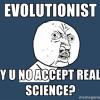Sign in to follow this
Followers
0

Convergent Evolution Defies Evolution...
By
gilbo12345, in Creation vs Evolution

By
gilbo12345, in Creation vs Evolution
Our Terms